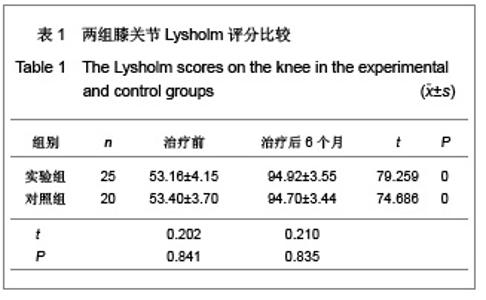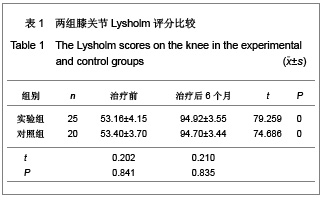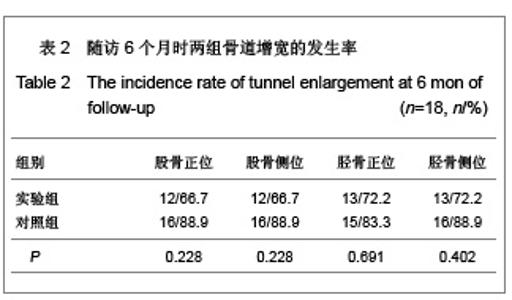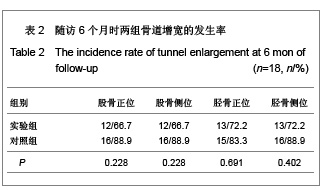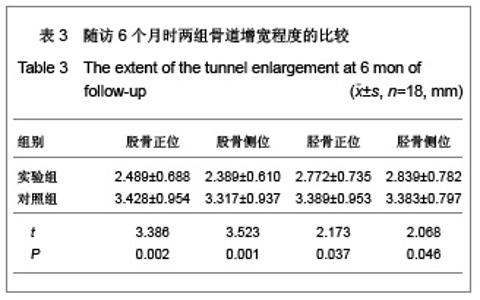| [1] Xu Y,Ao YF,Yu JK,et al.Zhongguo Yundong Yixue Zazhi. 2008; 27(2):202-205. 徐雁,敖英芳,余家阔,等.单束重建前交叉韧带骨道位置对临床效果影响的研究[J].中国运动医学杂志,2008,27(2):202-205.[2] L’Insalata JC,Klatt B,Fu FH,et al.Tunnel expansion fol-lowing anterior cruciate ligament reconstruction: a comparison of hamstring and patellar tendon autografts. Knee Surg Sport Traumatol Arthrosc.1997;5(4):234-238.[3] Di ZL,Zhang JH,He ZY,et al.Zhongguo Gu yu Guanjie Sunshang Zazhi. 2007;22(2): 95-97. 狄正林,章军辉,何志勇,等.关节镜下应用Endopearl和Intrafix固定腘绳肌肌腱重建前交叉韧带[J].中国骨与关节损伤杂志,2007, 22(2): 95-97.[4] Milano G,Mulas PD,Ziranu F,et al.Comparison between different femoral fixation devices for ACL reconstruction with doubled hamstring tendon graft:a biomechanical analysis. Arthroscopy.2006;22(6):660-668.[5] Ma CB,Francis K,Towers J,et al.Hamstring anterior cruciateligament reconstruction:a comparison of bioabsorbable interference screw and endobutton-post fixation.Arthroscopy.2004;20(2):122-128.[6] Duquin TR,Wind WM,Fineberg MS,et al. Current trends in anterior cruciate ligament reconstruction. J Knee Surg.2009; 22(1):7-12.[7] Sven US,Norbert PS,Andreas G,et al. Biomechanical comparison of hamstring and patellar tendon graft anterior cruciate ligament reconstruction techniques:The impact of fixation level and fixation method under cyclic loading. Arthroscopy.2002;18(3):304-315.[8] Chen J,Lu HS,Ni L.Zhongguo Xiufu Chongjian Waike Zazhi. 2007;21(3):247-250. 陈坚,吕厚山,倪磊.生物可吸收挤压螺钉在膝关节韧带重建术中的应用[J].中国修复重建外科杂志,2007,21(3):247-250.[9] Wang YJ,Ao YF.Zhongugo Yundong Yixue Zazhi. 2009;28(5): 526-529. 王永健,敖英芳.可吸收性材料辅助自体半腱肌腱移植重建兔前交叉韧带组织学转归实验研究[J].中国运动医学杂志,2009, 28(5):526-529.[10] Zysk SP,Fraunberger P,Veihelmann A,et al. Tunnel enlargement and changes in synovial fluid cytokine profile following anterior cruciate ligament reconstruction with patellar tendon and hamstring tendon autografts. Knee Surg Sports Traumatol Arthrosc.2004;12(2):98-103.[11] Fauno P,Kaalund S.Tunnel widening after hamstring anterior cruciate ligament reconstruction is influenced by the type of graft fixation used: a prospective randomized study. Arthroscopy.2005;21:1337-1341.[12] Kuskucu SM. Comparison of short-term results of bone tunnel enlargement between EndoButton CL and cross-pin fixation systems after chronic anterior cruciate ligament reconstruction with autologous quadrupled hamstring tendons.J Int Med Res.2008;36(1): 23-30.[13] Kong XZ,Zhao J.Zhonghua Guanjie Waike Zazhi. 2010;4(4): 536-541. 孔祥喆,赵金忠.前交叉韧带重建术后骨隧道扩大的研究现况[J].中华关节外科杂志:电子版,2010,4(4),536-541.[14] Vadala A,Iorio R,Carli AD,et al.The effect of accelerated,brace free,rehabilitation on bone tunnel enlargement after ACL reconstruction using hamstring tendons:a CT study.Knee Surg Sports Traumatol Arthrosc.2007;15(4):365-371.[15] Yu JK,Paessler HH.Relationship between tunnel widening and different rehabilitation procedures after anterior cruciate ligament reconstruction with quadrupled hamstring tendons.Chin Med J(Engl).2005;118(4):320-326.[16] Buelow JU,Siebold R,Ellermann A.A prospective evaluation of tunnel enlargement in anterior cruciate ligament reconstruction with hamstrings: extra cortical versus anatomical fixation. Knee Surg SportsTraumatol Arthrosc. 2002;10(2): 80-85.[17] Sakai H,Yajima H,Hiraoka H,et al. The influence of tibial fixation on tunnel enlargement after hamstring tendon anterior cruciate ligament reconstruction. Knee Surg Sports Traumatol Arthrosc.2004;12(5):364-370.[18] Hoher J,Moller HD,Fu FH.Bone tunnel enlargement after anterior cruciate ligament reconstruction: fact or fiction.Knee Surg Sports Traumatol Arthrosc.1998;6:231-240.[19] Peyrache MD,Djian P,Christel P,et al.Tibial tunnel enlargement after anterior cruciate ligament reconstruction by autogenous bonepatellar tendon-bone graft. Knee Surg Sports Traumatol Arthrosc.1996;4:2-8.[20] Fules PJ,Madhav RT, Goddard RK, et al. Evaluation of tibial bone tunnel enlargement using MRI scan cross-sectional area measurement after autologous hamstring tendon ACL replacement. Knee.2003;10: 87-91. |
